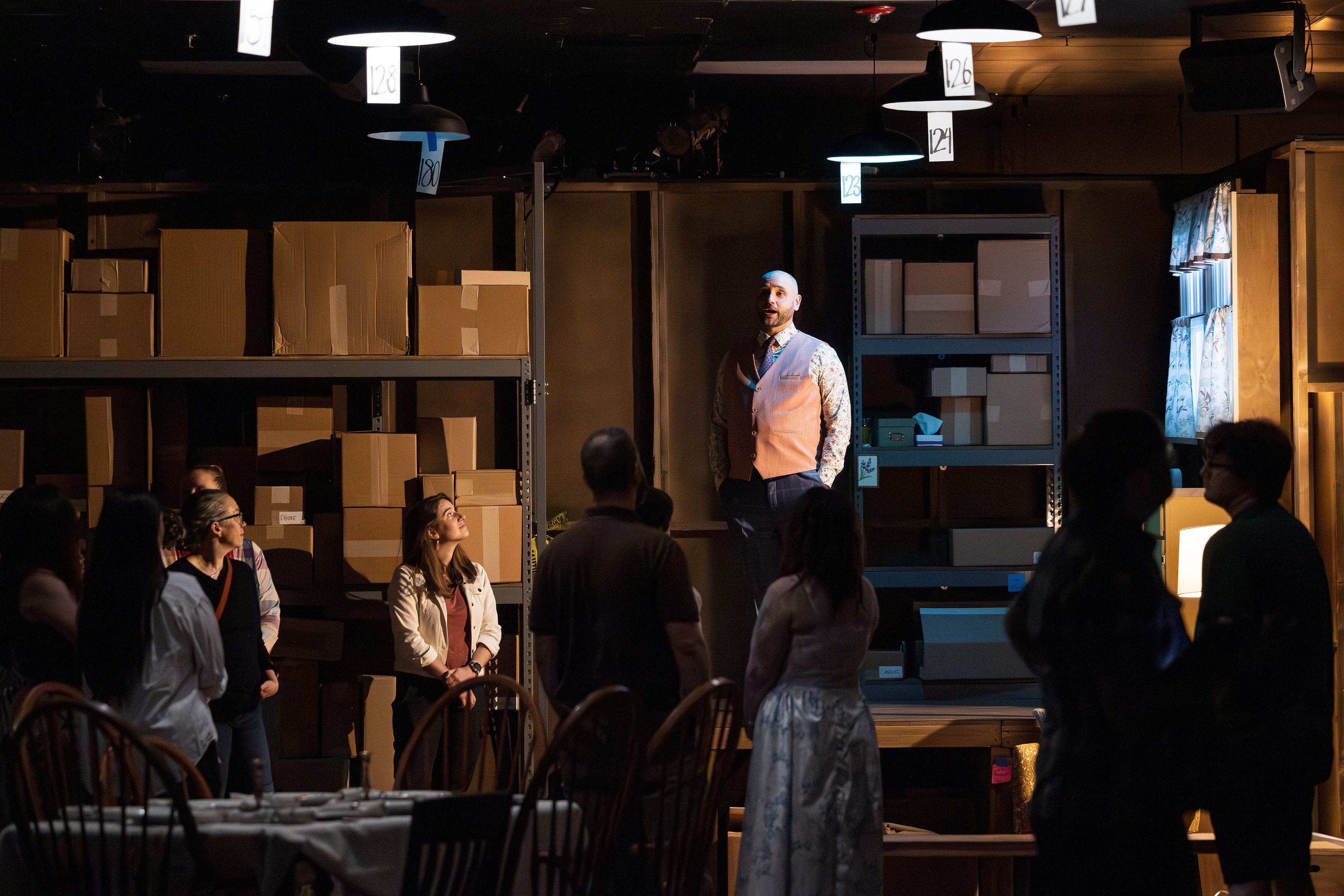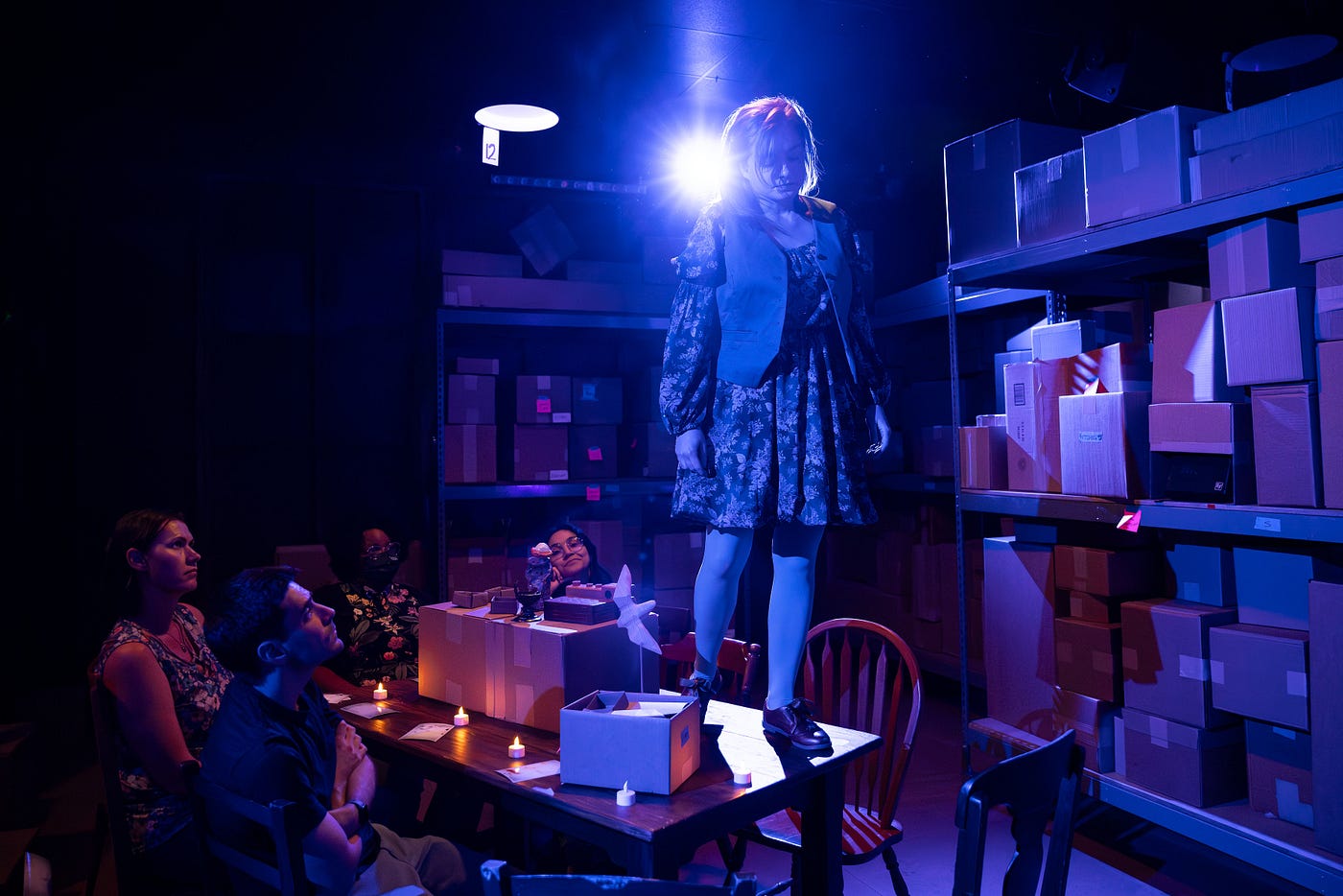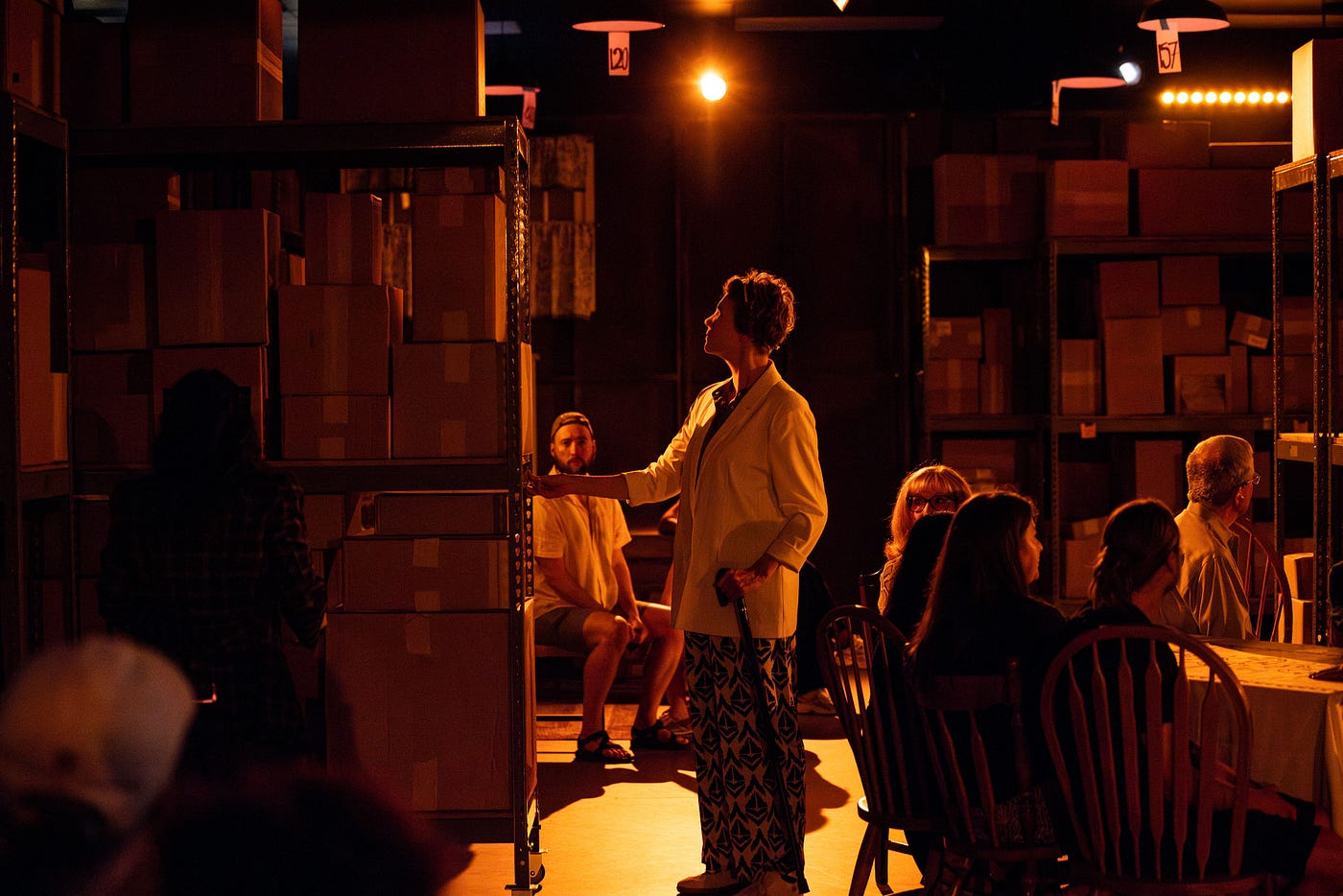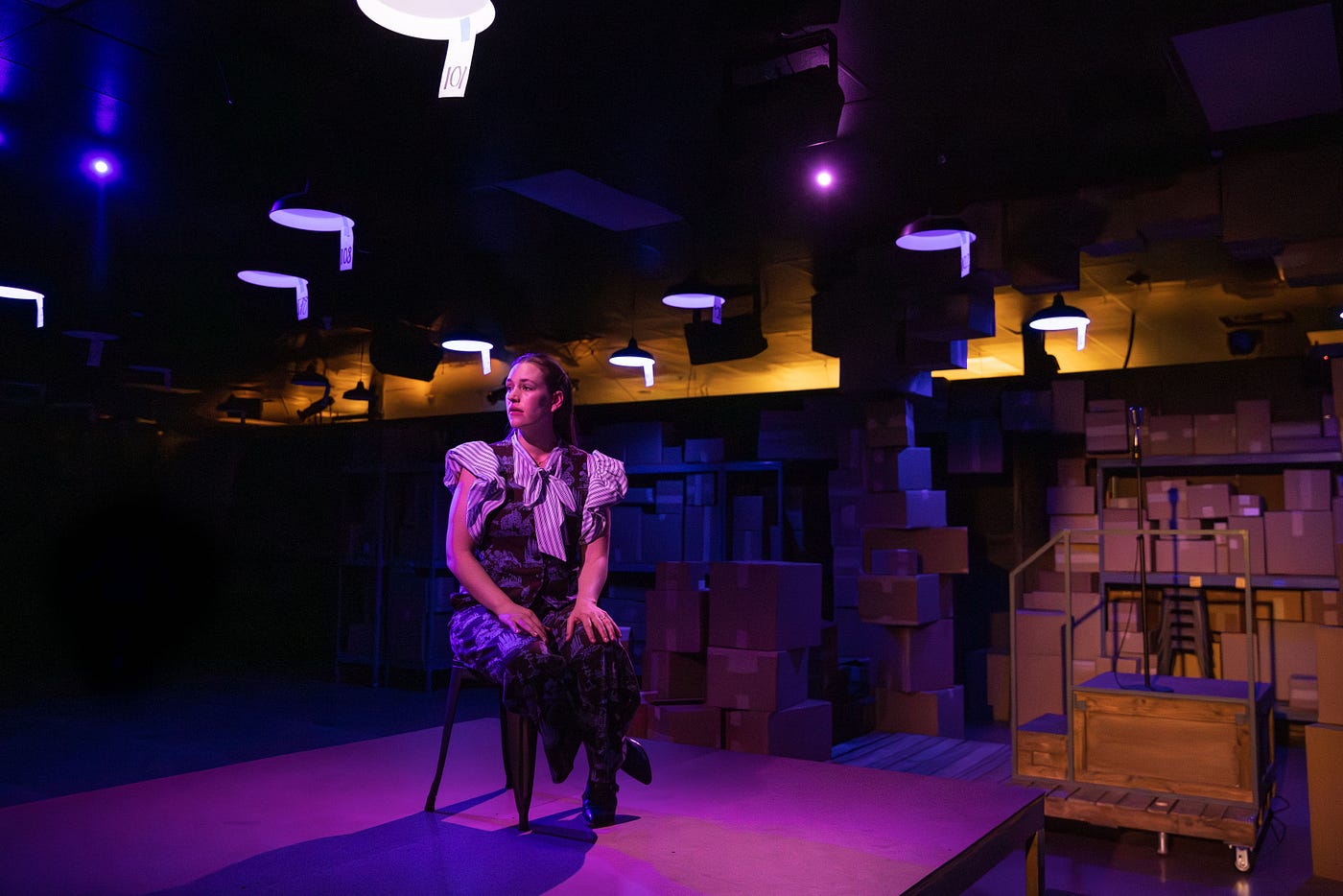Faded Memories — Revisiting The Past In ‘Sweet & Lucky: Echo’ (The NoPro Review)
Zach Morris of Third Rail Projects and the DCPA’s Off-Center revisit a past hit, and find an ‘Echo’


I moved to Denver two full years after the original Sweet & Lucky run, but folks were still buzzing about it when I arrived and started exploring the local immersive scene. That show put Denver on the immersive map and got people to realize that innovative, unconventional theatre wasn’t just happening on the coasts.
In an interview with No Proscenium, Charlie Miller of the DCPA Off Center said that every post-show audience survey for every show since then has yielded comments begging for the return of Sweet & Lucky. It’s an idea that creator Zach Morris of Third Rail Projects has been toying with for some time, and eventually realized a straight remount wasn’t possible between the logistics, the costs, and the fact that both the world and his own artistic questions had shifted. So they chose instead to revisit the material in a new way that could honor the original while speaking to today’s audience.
A big part of what made the original Sweet & Lucky so memorable and impactful, so I’ve heard, was the space in which it took place: a large, cavernous warehouse in the RiNo arts district that created the “attic” that housed boxes of memories. Without the constraints of a more traditional venue, the warehouse allowed them to do novel things like make it rain (literally) on audience members.

Now, nine years later, Sweet & Lucky: Echo takes place at the DCPA Off-Center at Broadway Park, the same location where Monopoly ran this past spring, and consequently grapples with the constraints of a somewhat more traditional venue. That is to say, there are no “wow” moments where impossible, unpredictable things happen to the audience like an indoor rainstorm.
Instead, the show began in the large waiting room/bar where around 150 people had gathered. Flower arrangements flanked a podium where two cast members approached to address the room en masse. With a seamless transition into the beginning of the show, they wore sombre expressions and thanked us all for gathering at the funeral. Whose funeral? I wasn’t sure, but I would certainly still pay my respects. The audience was then divided into two groups and were escorted to different rooms where we would remain for the duration of the show.
Once inside, our large group was splintered off into four smaller groups, one in every corner of the room that was filled with boxes and other elements of a life that had been packed away. Each group had a guide — someone who knew the deceased — and under their direction, we helped move and unpack boxes, unroll rugs and hang curtains, spread tablecloths and set tables, until the ‘rooms’ we were establishing looked just as the guide remembered.
I peered around the room to see the same thing was happening in each corner, providing some intimacy and engagement amongst our small groups while allowing the whole room to participate in the same collective adventure. That “adventure” was the approaching memorial service that we would soon help prepare for, and the resulting trips down memory lane as we dug through boxes of the deceased’s belongings.
At times throughout the show, my group of 15 people would temporarily splinter into smaller groups for parallel experiences or vignettes. At other times, the lights dimmed and activity ceased in our respective corners as the two main characters of the story would take the stage somewhere and the entire room would focus on just them and their dynamic.

These, I began to understand, were the two main characters from the original Sweet & Lucky, whose complicated story of love and life unfolded before us in small, episodic glimpses of the past — just as the original show had done almost a decade earlier. The show was cycling between the current reality of honoring them (the deceased) through ritual and ceremony, and our own memories of them, which were not always happy and pleasant.
One flashback took us to a holiday dinner hosted by our two main characters. This dinner took place in one corner of the giant room, around a group of participants who were seated at a dinner table, while the rest of us looked on. There was mounting tension in the air as our two main characters argued in front of their guests — an awkward, yet authentic, moment for anyone who’s ever been caught in the middle of a couple’s quarrel, or been the people fighting in front of their loved ones.
This scene (one that those who saw the original will surely recognize) built the necessary context that I needed to get a sense of the dynamic of their relationship. They built it up and let us sit with the uncomfortableness — making an imprint in my mind of this moment — before closing the vignette. I would have liked to see that approach repeated with other scenes, but almost all the rest were too brief, without enough setup, for them to have any meaningful impact on my relationship with the characters.
When we weren’t watching a memory scene, we were actively engaged with our group, participating in various acts of remembrance that were high in engagement but low in agency. The activities were not merely “surface level” (we were actually playing games, making crafts, and having conversations), but they ultimately had no impact on where the show went, and at times I struggled to even connect the activities to the larger narrative.

Sweet and Lucky — both the original and the remix — is a nonlinear story about love, loss, aging, and grief. Echo manages some very beautiful and tender moments, but they’re ultimately lost among a sea of distractions that do little to connect the audience to the story and its characters. Third Rail is known for making those connections largely through nonverbal movement and the widely adopted “egg beater” format of audience management that they helped pioneer, both of which are barely present in this remixed version of the story.
Without these elements, and from within a single, boring, black box room, Sweet & Lucky: Echo failed to deliver the magic and mystique that tales of the original are always steeped in. And while the show may have been designed for audiences both familiar and unfamiliar with the source material, I personally never really got a sense for what was happening, what we were doing, or why we were doing it.
Which raises the question: Who is this work for?
Is it for the average theatre-goer or arts enthusiast, meant to show them how unconventional, yet accessible, immersive theatre can be? If so, Sweet & Lucky: Echo is hitting the mark with a safe mix of traditional and nontraditional theatre elements that keep the show “on the rails” and make sure things never get too weird.
But is it for enthusiasts who are already fluent in immersive and crave the type of strangeness and intimacy that only that format can deliver? Not particularly. Seasoned immersive theatre-goers, particularly those familiar with Third Rail’s work, will be disappointed to find that things never do, in fact, get too weird or go too deep.
Sweet & Lucky: Echo runs through October 5th at the DCPA Off-Center at Broadway Park. Tickets start at $41 for students, $53 for General Admission.
Discover the latest immersive events, festivals, workshops, and more at our new site EVERYTHING IMMERSIVE, home of NoPro’s show listings.
NoPro is a labor of love made possible by our generous Patreon backers. Join them today and get access to our Newsletter and Discord! You can also GIFT memberships.
In addition to the No Proscenium website and our podcast, and you can find NoPro on Bluesky, Facebook, LinkedIn, YouTube, Instagram, and in the Facebook community also named Everything Immersive.